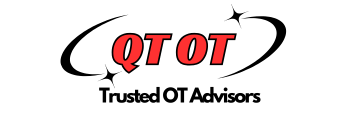Assuring The Right People Are Doing the Right Work At The Right Time!
One definition of OT is “the integration of work flows, data, and your organization to assure that accurate relevant information is in the hands of your staff, real time, to assure the right work is being done, at the right time, by the right resources”.
This is also a definition of DIRECTED WORK.
Getting to Directed Work is part of the journey to Operational Excellence.
For conventional oil and gas, the “opposite” of Directed Work would be “going to each well each day”.
Companies can save millions in recurring annual OPEX by moving to Directed Work, and we help companies review their work flows and data flows, and plot out the vision and plan to get it done!
Managing hundreds or thousands of wells, facilities, staff, and vendors, across a large geographical area, creates numerous challenges in trying to assure the right work is getting done. Work planners need to continually prioritize the work to balance production, downtime, human productivity, regulatory, compliance, safety, and sustainability programs.
Managing this balance on day-to-day, real-time basis, while planning out the next week, month, quarter, and year, can be a tough challenge. And recording these efforts to share with regulatory bodies or key stakeholders, can be a tougher challenge.
If you can get to the point where at a glance, you can see the “total” known work, the current state of your operators and vendors, and your facilities and instrumentation, you truly have “air traffic control” capabilities of your field.
At this point you are doing the best you can to efficiently use the resources in front of you; without this many companies are guessing, or simply do not know their current efficiency, or if they are opportunities to be saving millions in OPEX.
Would you like to keep guessing, or create a level of real time transparency that lets you adjust to incidents, economic shifts, staffing changes, cost pressures, weather events, and other uncontrollable environmental factors? You can’t prepare for everything, but you can provide strong transparency, timely effective tools, and communications, allowing you to adjust and respond to priorities in hours.
You might have heard of this thing called COVID; what may be the world’s most unexpected environmental event. One of our customers, when faced with keeping staff “socially distanced” and separated from some of their tools, were able to seamlessly continue work.
With their OT mobile app, a secure remotely accessible web app, and consolidated OT data warehouse, their staff to keep working remotely managing and executing work, continuing to execute their Directed Work. It was a minor change in approach to make the shift into COVID and out of it.
The combination of an OT mobile app(s), web app, and cloud hosting, assures that you can keep executing Directed Work, as long a you have an internet connection, and in the case of the OT mobile app, you can even work with out internet and sync your data as soon as you find internet again!
Most companies can not claim they can tell you where they specifically stand in terms of work to be done in particular day, week, or month. They can not tell you incomplete, late, planned, unplanned, or exception driven work. Basically, without a single consolidated data store, it is difficult or not possible to have real time directed work analytics and KPIs.
At a high level, Directed Work work breaks into three general categories, which mirror at a high level, the simplest form of a Maintenance Program:
- Known Maintenance
- aka Preventative Maintenance / “time” scheduled work
- Triggered Maintenance
- aka Conditional Maintenance, or maintenance work that is not scheduled on time basis, but something “triggers” us to do it. This could be run time hours on a motor, volume through a pump, a smart alarm or smart event telling us pressure in changing too rapidly
- Human Maintenance Based on Experience and Senses
- Aka “alarms”, but this is more when this is determined not so much via automation like the two categories above, but a good old human, hears, smells, or sees something.
I frequently have clients asking me about “what is the best approach to moving to Directed Work?”.
At a high level there are two general approaches, essentially opposite approaches, driven primarily by, which area does the client want to more efficiency and transparency from first: Maintenance or Operations by Exception. When added together, these add up to the sum of Directed Work.
The first approach is to start with your defined Maintenance Philosophy/Program and when that is running well, then incorporate Operations by Exception.
A good start is to begin with the first version of Maintenance discussed earlier, known and scheduled maintenance. Once that is running well, then incorporate the second common type of Maintenance, “triggered” work.
Triggered work is best captured and determined through the use of Smart Events.
Smart Events are combinations of equations, timers, and functions such as averages, maximums, and minimums, providing strong context, and significantly increasing that the defined event is a “true event”, as opposed to something like a traditional single set point triggered like “pressure > 100 psi”. Traditional single set point events lack context, and require additional work to investigate BEFORE you act, but Smart Events, indicate “it’s time to act now” and the context tells you “how to act” or it automagically generates work order to get the work done as soon as possible.
After triggered maintenance work, then incorporate remaining maintenance work. This is the type of maintenance work usually discovered by people, based on their experience with their facilities and it can be reported back, via your OT mobile app, through some type of follow up or feedback mechanism. Then it appears real time in front of your work planners to decide how to manage and record the work.
The second approach is to start with Operations by Exception, which should be driven by your Alarm and Call Out Philosophy and when that is running well, then incorporate your Maintenance Program.
We typically use Smart Alarms and Smart Events with our clients, and then we define Health States for wells and various facility types.
Health States range from “Normal” to not normal states like “Down”, “Call Out”, or “Well Servicing”.
Each Health State has one or more prioritized Smart Alarms or Smart Events in them. As those smart alarms and events trigger, then verify the health state, so the work planner or OT Platform, knows what action to take.
Once your alarm management, operations by exception, and call out requirements are met, then you can implement your Maintenance Program.
Now that you have your work “directed” you need to determine the best way to organize the work and deploy your work force against it.
To get work done, Operators need to “Visit” wells and facilities, so the job of the OT Platform and work planner, is to assure these are effective visits. Our solutions typically automate the set up of visits out 30 to 60 days, automagically scheduling and attaching known or triggered work orders onto visits. Then the work planner, just needs to quickly optimize the daily work load based on current conditions, and assign Operators.
The last component has traditionally been handled as runs. But many clients find that with an OT Platform in place, especially when also managing vendors with Operators, Directed Work is better managed with “Operating Areas”.
These are arbitrary geographic zones. The goal being that you “send” an Operator into these operating zones, and focus their work there for the day, to keep them as efficient as possible, and minimize driving.
Now that you have Directed Work going, a way to organize it, and optimize it, then you can drive further efficiency and value, but looking at any remaining work flows, providing you an opportunity to more effectively execute daily visits.
Below is a list of work flows we have helped other clients with and integrated into their OT Platform.
- Health State/Alarm Management
- Maintenance Program (PMs + Maintenance List)
- Oil Well Management (remote monitoring and control with photos)
- Water Well Management (remote monitoring and control with photos)
- Health Checks, Visits, Work Orders
- Doing Books / Field Data Capture
- Chemical Management
- Well Servicing
- Well Review Management
- Well Optimization
- Leak Detection
- Virtual Truck Skid
- Inspections/Forms
- Pigging
- Power Usage Monitoring and Timer Management
- Management of Change (MOC)
- Incident Management
QT OT is here to help you through the journey to DIRECTED WORK by helping you review your work flows, consolidate your data, and set up your OT Platform, review your organization, and assist in your change management and execution plan, so you can save millions in annual recurring OPEX!



